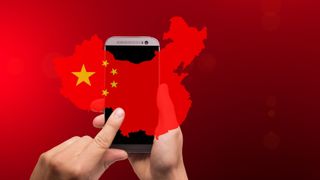
While the markets and the world’s diplomatic organizations are enjoying a cooling-off period in respect of the superpowers, on another less well-known and less public level, the dispute between the U.S. and China is more heated than ever.
The main point of contention between Washington and Beijing is not trade, but technology. China’s most competitive business sector is battling for supremacy in the so-called fourth Industrial Revolution, which consists of developments in artificial intelligence, automation and robotics, big data and quantum communications. The race for leadership and superiority in the field of technology not only affects production, but also has implications relating principally to geopolitics and national security.
Since the end of last year, the matter at the heart of the conflict has been 5G technology, the “fifth generation” of cellular mobile communications, which will transfer data at a speed of one gigabyte per second (three times the speed of the current 4G network). In addition to the impact it will have on telephone communication, the new technology will also affect a range of other fields, such as self-driving vehicles, robotics, and so-called smart cities, the services of which, such as electricity and transport networks, are connected to the internet. Aside from the billions of dollars in play, the providers will have control of a valuable set of knowledge and expertise.
For the first time since the development of 1G technology in 1980, the Chinese capital is a market leader. Furthermore, companies like Huawei, Oppo and ZTE are spearheading the development of the new technology. On Nov. 30, 2018, some 10 engineers from Oppo executed the world’s first 5G video call. The research into and development of 5G carried out by Chinese smartphone manufacturers pave the way for the large-scale commercial launch of the technology, which is one or two years away. These companies are making every effort to introduce 5G into every country in the world.
It is in this context that the aggressive measures taken by the U.S. against the Chinese capital must be interpreted. In May last year, the Trump administration banned ZTE from doing business with U.S. companies, such as Qualcomm and Intel, as a result of deals they had made with the Islamic Republic of Iran. In August, the White House signed a bill prohibiting the use of ZTE and Huawei technology in all areas of the U.S. government, as well as in any government contract work, over suspicions of espionage and fear of cyber attacks.
Meanwhile, the arrest of Huawei’s chief financial officer in Canada at the request of the U.S. judiciary last December was an unusual show of aggressiveness toward a leading figure of a multinational company. Over the last few days, the U.S. Department of Justice has brought a 10-count indictment against subsidiaries of Huawei in a federal court in Brooklyn, New York, over allegations of intellectual property theft from telecommunications company T-Mobile.
The dispute is not confined to U.S. territory. For months, Washington has been lobbying its allies, mainly those in Europe, in an attempt to stop them from allowing the use of Huawei’s 5G technology. Canada, Great Britain, Australia and New Zealand have already banned the Chinese multinational from partnering up with local telecommunications providers. Over the last few days, Germany has decided to launch an investigation to determine whether it should also join the boycott against the company. The fear behind these measures is unmistakable: Huawei may be a sign of China’s looming global influence.
Ultimately, the world is en route to experiencing a new “curtain.” Although this curtain will be more ambiguous and virtual than the “iron” one described by Winston Churchill at the outset of the Cold War, it will be no less significant. In order to keep China’s influence in check, the U.S. and its allies have begun to build a “gigabyte curtain” that will extend across Europe and the rest of the planet.

Leave a Reply
You must be logged in to post a comment.